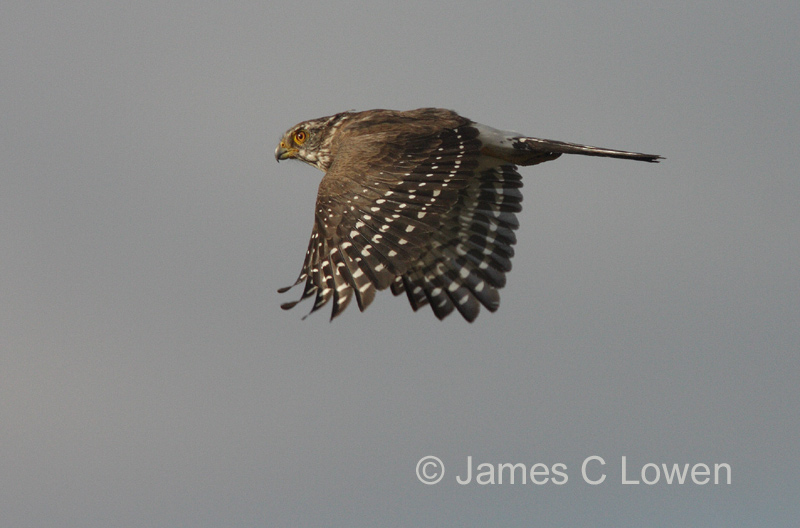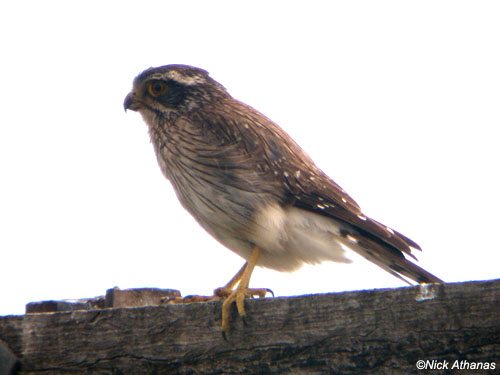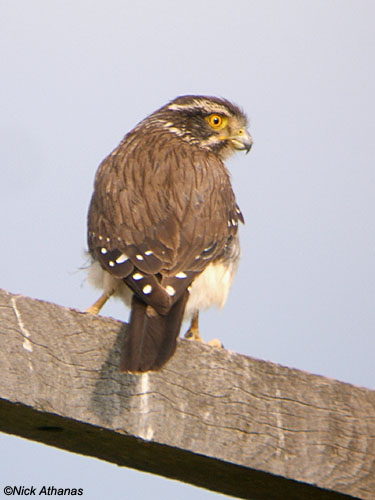
Spiziapteryx circumcinctus
SUBFAMILY
Falconinae
TAXONOMY
Harpagus circumcinctus Kaup, 1852, Chile; error, Mendoza, Argentina.
Monotypic.
OTHER COMMON NAMES
French: Carnifex а ailes tachetйes; German: Tropfenfalke;
Spanish: Halconcito Argentino.
PHYSICAL CHARACTERISTICS
11.0–13.0 in (28–33 cm); about 3.5 oz (100 g). Female larger
than male. A slight short-winged, long-tailed forest dweller.
Head, back, and wings gray-brown; a pale streak that extends
back from above the eye, black ear coverts and moustachial
streak form a characteristic pattern. Shoulders and wing spotted
conspicuously with white. Underparts pale gray, narrowly
streaked with brown. Central tail feathers black, remainder
barred with white to form wide black bars. No distinctive juvenal
plumage (unlike other falconids).
DISTRIBUTION
South America: eastern Bolivia, through Paraguay to north and
central Argentina.
HABITAT
Savanna, scrubby woodland, and semidesert.
BEHAVIOR
Sedentary. Roosts in communal nests of monk parakeets
(Myiopsitta monachus) in winter, even when the nests are occupied
by parakeets.
FEEDING ECOLOGY AND DIET
Hunts mainly birds, some as large as they are, and lizards and
insects such as locusts and cicadas. Bird prey includes nestling
and adult monk parakeets.
REPRODUCTIVE BIOLOGY
Nests as solitary pair in about November–December in woven
nests of other species such as cachalotes (Furnariidae) and
colonial monk parakeets; falconets enlarge the nest and entrance.
In Argentina, 15 of 70 parakeet nests (21%) had nesting
pairs of falconets. Lays clutches of two to four eggs; incubation
period is unknown; young fledge after about 33 days.
CONSERVATION STATUS
Not threatened. Status is unknown but habitat is not seriously
degraded.
SIGNIFICANCE TO HUMANS
None known.
Photo Gallery of - Spot-winged falconet




 Animalia Life
Animalia Life